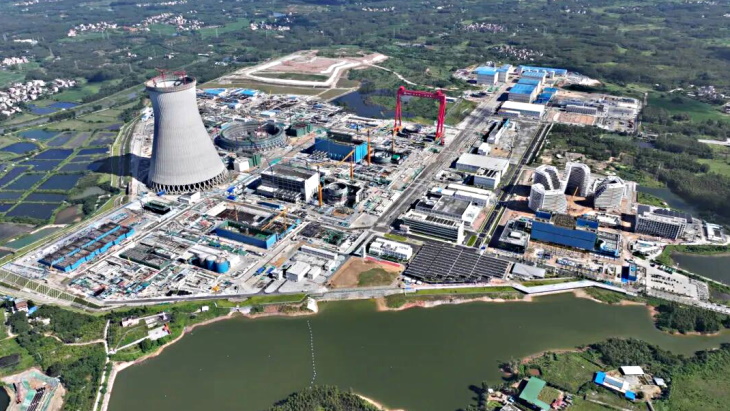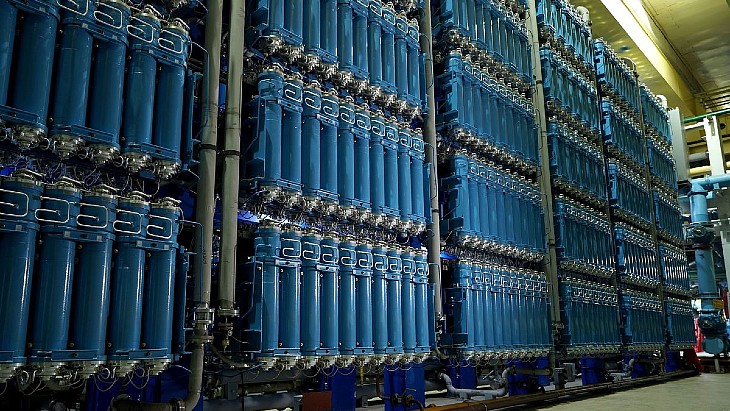Commissioning of the new centrifuges at the Isotope Separation Plant is scheduled to be completed in 2027. The fourth facility to be upgraded will be the Angrask electrolysis Chemical Plant in the Irkutsk region, Rosatom said.
Natalia Nikipelova, President of TVEL, said they had been "fulfilling a record-high production programme for several years in a row, but at the same time we are steadily implementing large-scale modernisation projects at all stages of the nuclear fuel cycle that our enterprises are involved in. Rosatom has already invested heavily in modernising nuclear fuel fabrication, uranium enrichment and conversion facilities, as well as manufacturing of gas centrifuges for isotope separation. This work will become the foundation for fulfilling the ambitious goals for the production of enriched uranium and nuclear fuel for operating nuclear power plants and the ones under construction in Russia and abroad".
In July TVEL said work was already progressing on a 10th-generation gas centrifuge. It said it was preparing for pilot industrial operation at one of its sites as part of the development work.
It stressed that the 9+ generation gas centrifuges would operate for decades. The differences between the various generations was not specified beyond "the growth of their efficiency and productivity".
Unenriched, or natural, uranium contains about 0.7% of the fissile uranium-235 (U-235) isotope. ("Fissile" means it's capable of undergoing the fission process by which energy is produced in a nuclear reactor). The rest is the non-fissile uranium-238 isotope. Most nuclear reactors need fuel containing between 3.5% and 5% U-235. This is also known as low-enriched uranium, or LEU. Advanced reactor designs that are now being developed - and many small modular reactors - will require higher enrichments still.
Enrichment increases the concentration of the fissile isotope by passing the gaseous uranium hexafluoride through gas centrifuges, in which a fast spinning rotor (a thousand revolutions per second) inside a vacuum casing makes use of the very slight difference in mass between the fissile and non-fissile isotopes to separate them. As the rotor spins, the concentration of molecules containing heavier, non-fissile, isotopes near the outer wall of the cylinder increases, with a corresponding increase in the concentration of molecules containing the lighter U-235 isotope towards the centre. World Nuclear Association’s information paper on uranium enrichment contains more details about the enrichment process and technology.
Johan Svenningsson is Country Chairman and CEO of Uniper Sweden, as well as being vice chairman and chairman-elect of World Nuclear Association.
(Click the podcast player above to listen. Scroll down this page for an edited transcript)
In this edition of the World Nuclear News Podcast Svenningsson talks about what has been an eventful few years for the nuclear energy sector in Sweden, and the current positive mood around ambitious plans for new nuclear - "it's fantastic, we're basically talking about nuclear 2.0 in Sweden", is how he puts it.
He also covers: lessons on modular construction from his previous work in the oil and gas and the pharmaceuticals industries; life-extension work; decommissioning programmes; and how the construction of a deep geological repository is progressing.
Regarding his role with World Nuclear Association, Svenningsson says nuclear is a unique global industry where people learn from each other and share knowledge: "I don't see any other industry which is that global and which is that integrated - we're all competitors, suppliers, customers but we really focus on, and want, nuclear to be a strong part of a future, greener society."
His priorities for the association include the industry's need to deliver, now that the political and financial conditions are increasingly in place. He says that on the political and regulatory front "we've come a long way - I think nuclear is starting to be more on a par with other technologies, but there is still a way to go". Other priorities are the need to attract a diverse range of talented people into the industry, and to develop supply chains in both emerging nuclear countries and in those countries restarting nuclear construction programmes after decades.
Here is an edited version of the interview:
Background:
A mechanical engineer by training, Svenningsson did his Master’s thesis at the nuclear power plant in Oskarshamn, then joined ABB’s trainee programme and was in the nuclear division which was later acquired by Westinghouse. He also worked at the Ringhals nuclear power plant before spending time outside nuclear, working in the oil and gas and pharmaceutical industries, gaining experience of building modular offshore platforms and modular pharmaceutical plants. He has been Country Chairman and CEO for Uniper Sweden, since 2016.
What lessons did you learn from modular construction?
It's quite fascinating looking at sectors like offshore oil and gas and pharmaceuticals. They are highly regulated, high-quality, big projects, with a lot of similarities to nuclear, especially if you add in the modularisation. We can learn a lot from those industries - when you get modularised production in factories the cost of manufacturing goes down tremendously, but also the quality goes up because the indoor environment means you can spread your design and manufacturing, doing the most difficult modules first, because then we just put them all together. I think that we, as an industry, could probably do more of getting that knowledge from outside, even though we're really good at getting learnings from within the industry.
On his role with Uniper
We are the second largest energy company in Sweden. We have a large nuclear portfolio, but also a large hydro portfolio with 78 hydropower plants, and thermal plants, basically for security of supply. We are the only company in Sweden which has ownership in all operating nuclear facilities. So we're the majority owner of the Oskarshamn plant and minority owner in the Ringhals and Forsmark plants. We also have a large decommissioning portfolio. We are decommissioning four plants in one common programme and that is quite fascinating - we can really take the learnings from decommissioning a fleet of plants and we see the cost curves coming down about 30% from the 1st to the 4th unit. On top of that, we also have an international decommissioning business where we're selling decommissioning services in Europe and globally for different customers.
How can decommissioning experience inform plant design?
We're looking into how we can take the decommissioning experience and build that into new designs. Of course, you probably don't want to pay too much for that in the design because this benefit will come about 100 years from now, or 80 years from now. But if you can do that, if you design with a plan for decommissioning, you can save a lot of money and also make it much more efficient and safe. So building that experience into a new design, I think that's probably coming in a few years. Right now we need to deploy the ones that we have on the drawing board.
On the outlook for nuclear in Sweden
It's quite fantastic. We're talking about basically Nuclear 2.0 in Sweden. We're coming to the end of the life of the first cycle for some of our plants, and they're going to decommissioning. But we also see, as a nuclear nation since the 1960s, the need for nuclear in the system to have a reliable, cost-effective and clean energy system. We saw in Sweden that when we started to reduce the share of nuclear that that has an impact on the system. That's really fostered the view that ‘we need to expand, and we need to build new nuclear’ and, of course, to make sure that the current fleet we have can operate for as long as possible. As Uniper we've been working with this since 2016 to really ensure that we get the right policy development and now in recent years, the current government is really pushing ahead with policy updates, legal updates, financial schemes, risk-sharing and is committed to getting new nuclear in place with clear targets of having 2.5 GW online by 2035 and 10 GW by 2045. It seems ambitious. It is ambitious. But it's actually almost a copy of what it did in the 1970s and the 1980s. So if we did it then, why couldn't we do it now?
Sweden’s proposal to hedge against political risks
We know politics may change every 4, 5 or 6 years when you have an election, and that is right, because we're democracies. But if you invest for something that's going to be there for 80 or 100 years, you need to have some type of protection and some type of risk-sharing with the government. I think the discussion that the Swedish Government is having now (outlining compensation payable to owners if a future government decides to phase out nuclear energy) is a good way of trying to limit those risks, so the bar would be higher if politicians want to change policies in the future. It’s going to be interesting to see the final proposals.
Uniper’s involvement in Sweden’s new nuclear
We currently do not have any plans for new-build. We are currently focusing on the existing plants, and I think that's also a global issue. We really like the growth of new nuclear coming but we also need to keep the current plants operating in a safe, high-availability and cost-effective manner, so that is our focus currently. Making sure that we do the investment so we can operate these for decades to come. But then we are also following very closely all development activities, to be up-to-date with that in case something changes in the future. but also because it could impact our current fleet with technology developments and regulatory developments. We are also involved in research and development and we have this joint venture with Blykalla where they're developing the 4th generation lead-cooled advanced modular reactor. Together we are building this electrical test facility. It's not a nuclear power plant, but it's a test facility to show the processes, show that we really want to be part of this research and development.
The operating life of existing plants
Currently the Swedish fleet is upgraded to run to 2040-2045. In the last few years we've been doing the pre-studies looking for them to go from 60 to 80 years, from 2045 to 2065 or actually more, maybe taking years out of the equation, we just continue to invest, a little bit like we do with the hydro fleet, we just invest and they've been running for 100 years. So, we're doing the first pre-studies and we see that there's no technical limitations. We have as a planning assumption to run for 80 years and we're doing all the detailed pre-studies to be able to probably make the first investment decisions in the early 2030s. It's still a long way to go to when we need to be upgraded, but it's a long process and we want to be out there early, making sure that if there are any issues that we can address them.
Is 80 or 100 years the limit for operation?
The more we learn, we really see that it is more just to continue investing for continuing operations and then seeing. There will be limits at a certain point … exchanging a reactor pressure vessel, I think that today that doesn't seem to be financially viable. Then you have a concrete structure with a containment that is also going to be a limiting factor, but we see that that is very far down the road. The rest you could basically change everything. But how big is the investment? So today I don’t see an end date and I know in the US there's programmes looking for 100 years.
On Sweden’s deep geological repository
I was in a meeting recently where people said the problem that we haven't solved was the nuclear waste issue. But I said that issue is solved. We have a final repository where we developed the concept and the design in Sweden. Finland took the same concept but they've been faster than us in the approval process, much more efficient, so they have a final repository which is now in test operation. We are now breaking ground and starting to build the final repository. We have all the necessary approvals at this stage. So for us that is a solved issue. Now it's time to construct it and build it. We have good conditions with our bedrock in the Nordics, but this is a solution that can be deployed globally.
Getting involved with World Nuclear Association
I think nuclear is a global industry, a fascinating industry. We are learning from experience across the whole world, from the US, from Europe, from China, all different nations. But also to be part of driving the conditions to tackle climate change and to go to a fossil-free society. Nuclear has a really big role to play there. Without nuclear, the hurdle and the cost would be so much more. I also wanted the Nordic industry, with a long and successful history in nuclear, to be able to give that experience to World Nuclear Association. So both giving to the industry and also gaining from the knowledge.
What are the nuclear industry’s strengths?
I don't see any other industry which is as global and which is as integrated. We're all competitors, suppliers and customers and we all really focus on wanting nuclear to be a strong part of the future … we know that we're all in the same boat and that means that we need to work together to ensure both nuclear safety, but also finding the ways to be attractive and competitive.
As chairman of World Nuclear Association what will be priorities?
There's a lot of things. The first one is that we really need to deliver. All of us in the industry have been working to try to create the conditions for nuclear and now we're starting to get the conditions. We have a lot of the political support, we have the financial support, we have investors in the countries that want to invest in nuclear. So the conditions are starting to be there, so it is for us to really make sure that we are delivering on our promises (on budget and on schedule). Then, as part of that, of course, creating the financial conditions, the regulatory conditions, the political support. I think we've come a long way. I think nuclear is starting to be more on a par with other technologies, but there is still a way to go. We're still talking about renewables or nuclear or renewables and nuclear. We should look at all these technologies to be fossil-free to get us to a greener society. And another priority is the skills supply and the competence supply and the supply chain. It’s a lot of work but we know that when the business is there that will attract young talents. It will attract experienced people. As a side note, something that's also close to my heart is diversity and inclusion. We, as an industry, as is typical of these type of industries, are typically male-dominated. I think we're quite diverse, we're very diverse from a nationality perspective, but we need to work more on the diversity side to attract female students and female professionals.
Involvement with World Nuclear University
This is a bit of a side hobby. I had the opportunity to be part of the Summer Institute, which is a great event where we have all the global talents and coming leaders, 50-70 people from 40-50 different nations in the five week gathering to develop leadership. I had the opportunity to be there to talk about leadership and my leadership journey and also to be part of the evaluation of the work they're doing. For me it gives me as much as I hopefully give to them, with the energy and the knowledge that they have from all over the world. We have people from Africa, Asia, Europe, the US and Canada meeting together and we're all talking about nuclear leadership. It's a fascinating event.
On the long term outlook for nuclear and main challenges
What I have seen change in Sweden and also in the EU, and globally, is that we're starting to see nuclear as really part of the equation. We need to have a significant growth of nuclear, otherwise we will not meet the Net Zero targets on a global scale (he adds that each country can decide for itself it wants to have nuclear or not). So first of all we need to keep the current units operating safely and available for the long term, because otherwise the bar will be raised even further. In Europe, the US, Canada and the Western world, where we have built very few plants in the last years, there have been first-of-a-kind issues which we need to get through on this learning curve. Another hurdle is finance, but the finance community is really starting to appreciate and find models and ways so it's really starting to be bankable and investable with risk sharing with governments. So the need is there for new nuclear and the market is there. So I think that's a very positive outlook.
Key links to find out more:
World Nuclear News Podcast
Uniper Sweden
World Nuclear Association
Email newsletter:
Sign up to the World Nuclear News daily or weekly news round-ups
Contact info:
alex.hunt@world-nuclear.org
Episode credit: Presenter Alex Hunt. Co-produced and mixed by Pixelkisser Production
_82983.jpg)
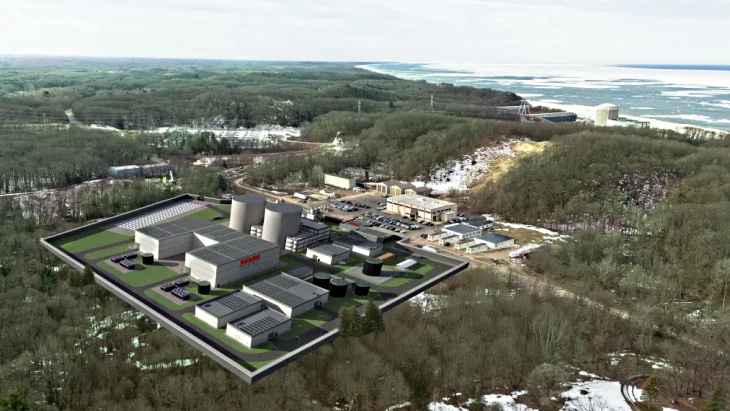
_56328.jpg)
_49382.jpg)
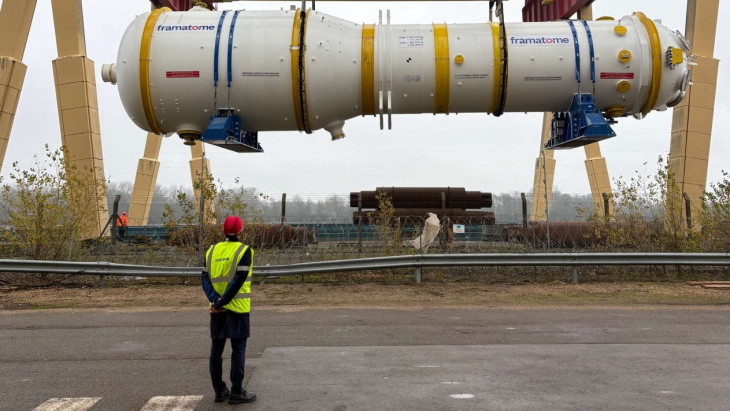
_34792.jpg)
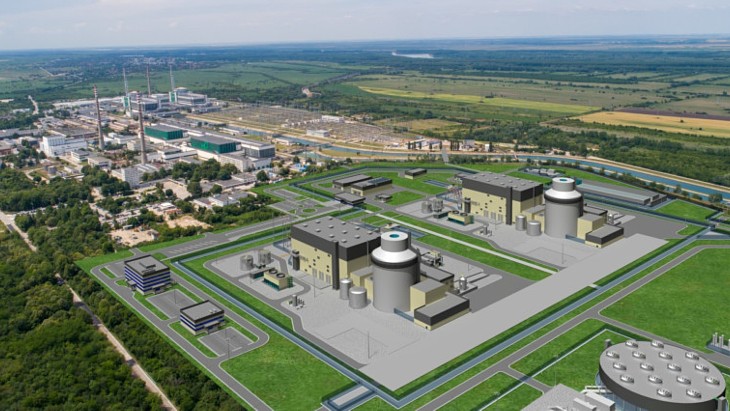
_44406.png)
